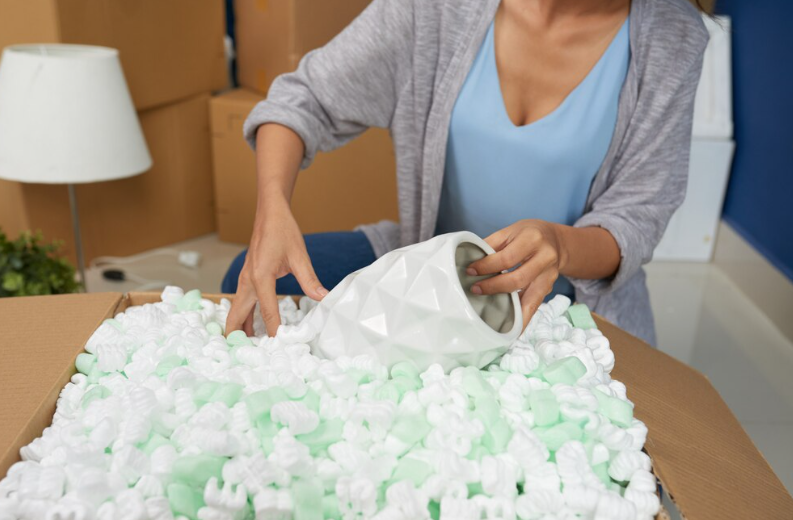In the ongoing quest for sustainable packaging solutions, foam emerges as a compelling contender, challenging traditional notions and paving the way for a more eco-conscious future. As industries globally grapple with the environmental impact of packaging materials, it’s crucial to scrutinize whether foam, with its versatile applications, is the sustainability game-changer we’ve been anticipating.
The Evolution of Foam Materials
Once synonymous with environmental concerns, foam packaging has undergone a transformative evolution. Innovations now offer biodegradable and recycled foam materials, addressing the core issue of environmental impact. The shift towards sustainable foam aligns with ecological priorities and sets a precedent for responsible packaging practices.
Reducing Carbon Footprint
Thanks to production processes and materials advancements, foam’s ecological footprint is shrinking. Studies indicate that the carbon footprint of foam packaging and packing foam spray has significantly decreased with adopting sustainable practices. This reduction is a testament to the industry’s commitment to minimizing environmental harm.
Case Studies in Sustainability
Concrete examples underscore the sustainability potential of foam packaging. Companies embracing eco-friendly foam solutions report substantial reductions in their overall environmental impact. From reduced waste in production to minimized emissions, these case studies demonstrate the tangible benefits of choosing sustainable foam alternatives.
Foam’s Versatility in Eco-Friendly Packaging
Beyond its environmental gains, foam’s versatility is pivotal in enhancing sustainability. Customizable and protective foam packaging ensures products reach consumers in pristine condition, reducing the need for replacements and minimizing waste. This dual functionality underscores foam’s value in fostering environmental and economic sustainability.
Benefits of Foam Packaging
- One of foam packaging’s standout features is its ability to be customized to fit the contours of any product. Whether it’s delicate electronics, intricate artwork, or irregularly shaped items, foam can be tailored to provide a snug and secure fit. This customization ensures optimal protection during transit and reduces the overall material used, aligning with sustainable practices.
- Foam’s innate cushioning properties make it an excellent choice for protecting fragile or sensitive items. From preventing breakage to insulating against external factors, the foam acts as a reliable barrier, ensuring that products arrive at their destination in impeccable condition. This protective quality reduces the likelihood of damages and minimizes the environmental impact of replacing or repairing goods.
- The protective qualities of foam translate into economic sustainability by minimizing the need for replacements. Items arriving in pristine condition reduce the financial burden on businesses and consumers alike. This not only enhances the overall economic efficiency of the supply chain but also aligns with sustainable business practices.
- By mitigating the risk of damage during transit, foam packaging directly contributes to waste reduction. Reduced product damages mean fewer items end up in landfills, translating to a more sustainable approach to waste management.
Navigating Challenges and Seizing Opportunities
While the sustainability narrative around foam packaging is promising, challenges persist. Striking a balance between functionality, cost-effectiveness, and sustainability remains an ongoing concern. However, these challenges serve as catalysts for innovation, encouraging the industry to explore new avenues and refine existing practices for a greener tomorrow.
Consumer Perception and Sustainable Choices
Consumers, increasingly eco-conscious, scrutinize packaging choices, especially in today’s world, where online shopping is the go-to choice. Sustainable foam packaging allows businesses to align with consumer values, fostering brand loyalty and positive perception. As more consumers prioritize environmentally responsible options, businesses embracing sustainable foam packaging stand to gain a competitive edge.
Concrete Examples of Foam’s Sustainable Applications
- Electronics packaging: In the electronics industry, where precision and protection are paramount, foam inserts provide a tailored solution. Custom-cut foam secures devices in transit, reducing the risk of damage. This safeguards the product and minimizes electronic waste resulting from damaged goods.
- Artwork and fragile items: Foam’s versatility shines when protecting delicate or fragile artwork. Museums, galleries, and artists increasingly use custom foam packaging to ensure that paintings, sculptures, and intricate pieces endure unscathed shipping. This not only preserves the artistic integrity but also reduces the environmental impact associated with potential replacements.
- Medical equipment transport: Foam’s protective nature extends to the healthcare sector, where delicate and sensitive medical equipment often requires secure packaging. Custom foam solutions ensure that equipment reaches its destination without damage, contributing to the longevity of medical devices and minimizing the need for replacements.
Looking Ahead: A Sustainable Horizon
Foam packaging is transforming profoundly, emerging as a sustainable solution that transcends its conventional environmental reputation. With advancements in materials, manufacturing processes, and heightened consumer awareness, foam packaging’s trajectory toward sustainability is clear. As industries continue to explore and invest in greener alternatives, sustainable foam packaging stands poised to redefine the landscape of eco-conscious packaging solutions.
